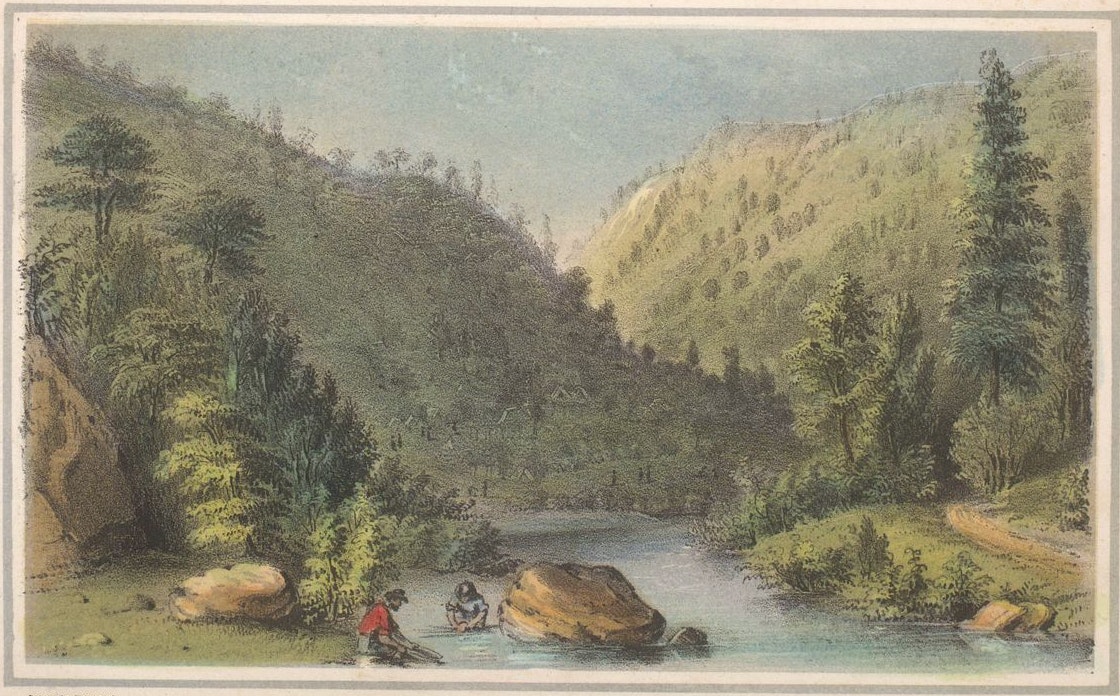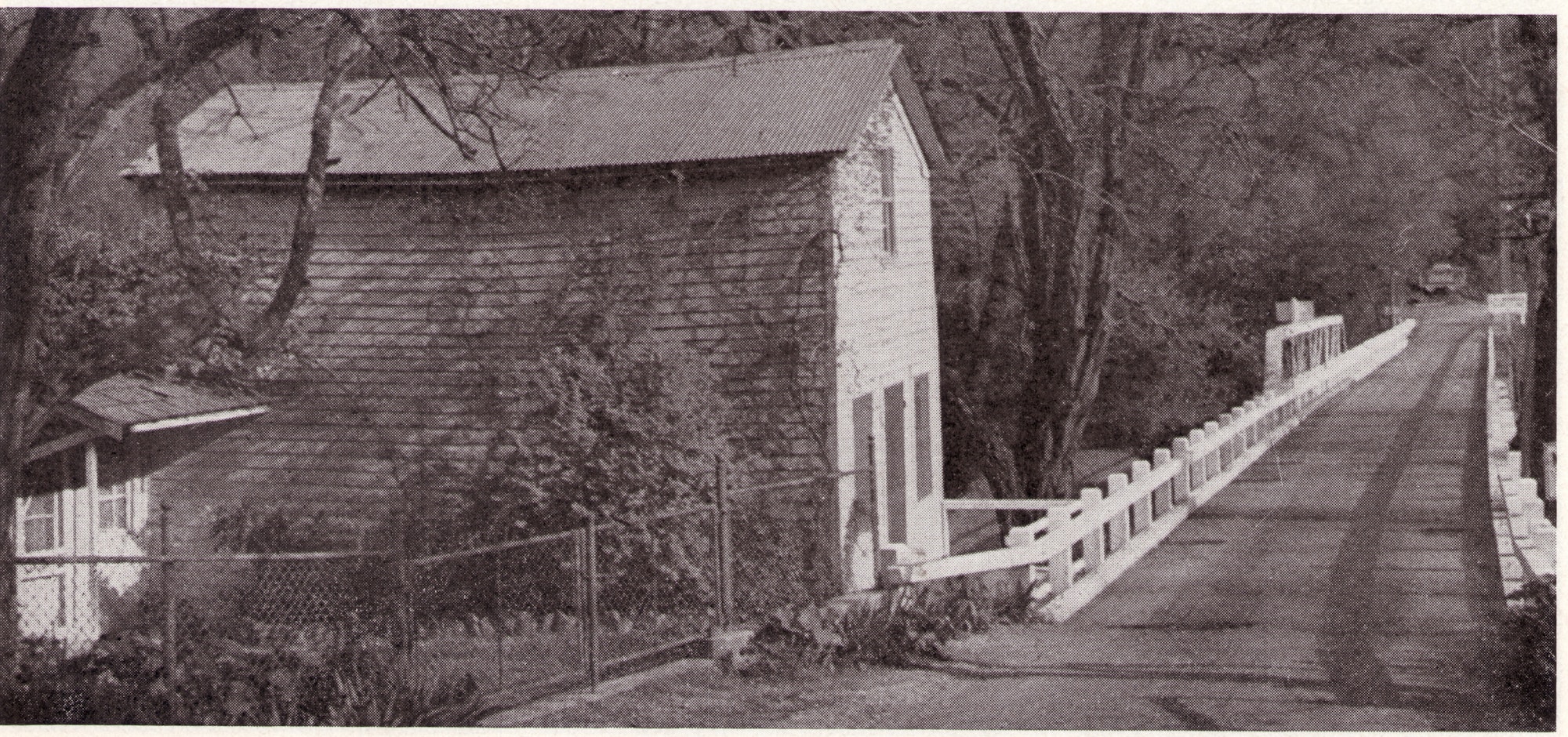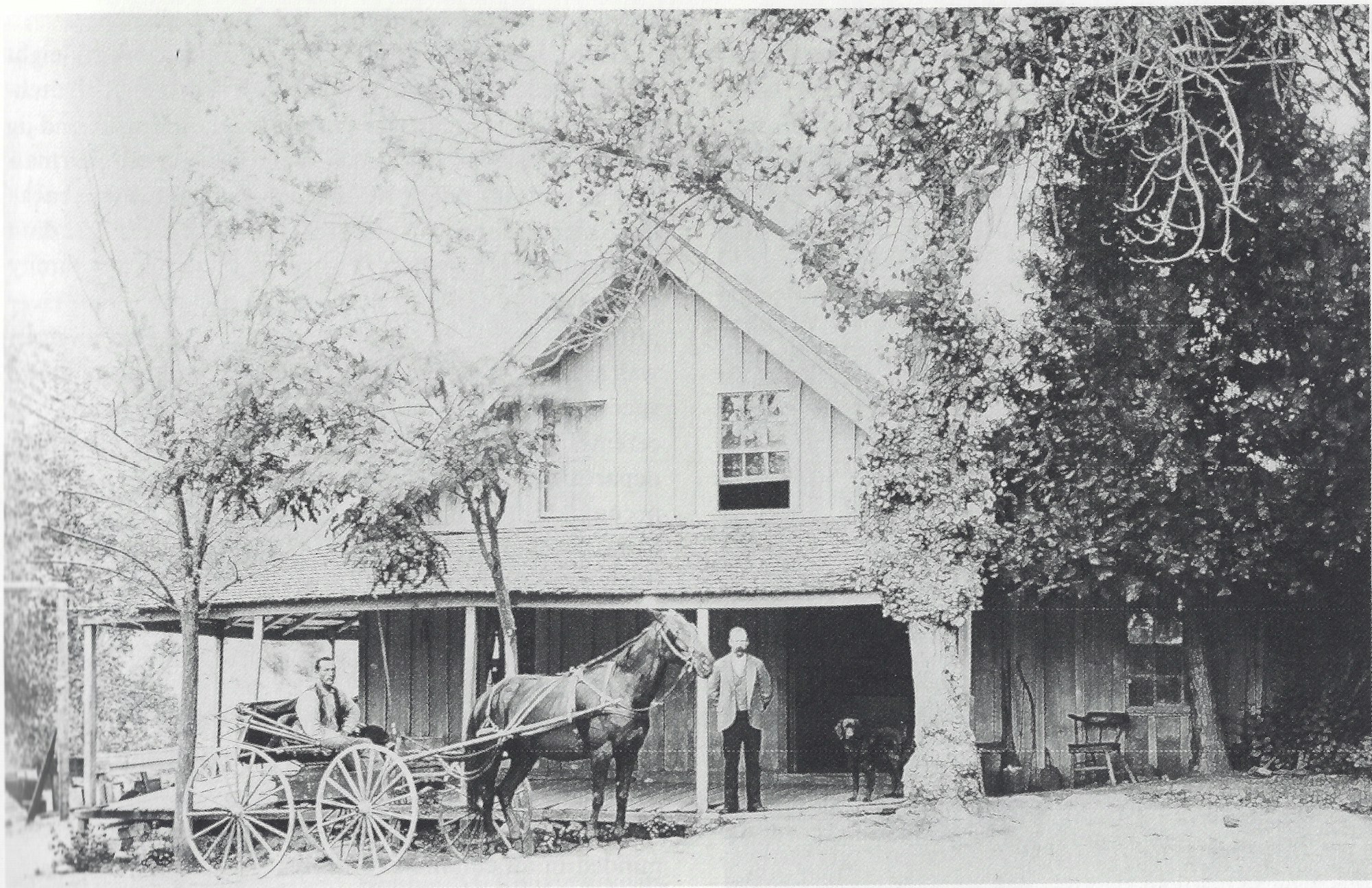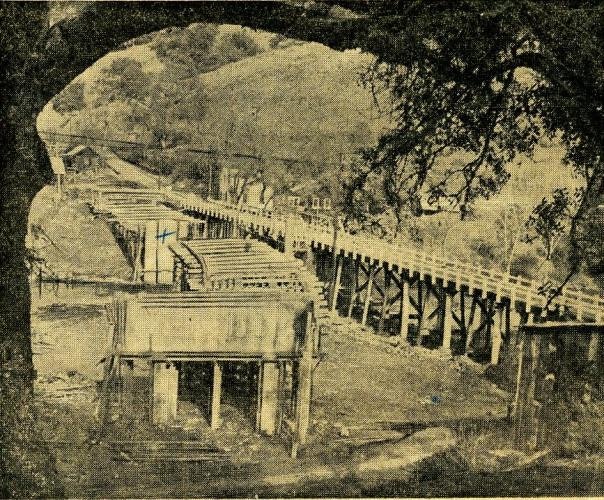Big Bar

Mining is recorded at Big Bar (where Hwy 49 now crosses the Mokelumne River) as early as 1848, and Bayard Taylor refers to it as “Upper Bar” in August of 1849 (Taylor 1949, Chapters 3 and 9). That same year a “whale boat” ferry is noted along the route, which was reached from Mokelumne Hill by the steep, narrow “Miwok Trail.” The rich diggings along this stretch of river supported abundant miners, and produced a piece of quartz containing eight pounds of gold (Picayune, August 31, 1850).
In these early years, the route from Moke Hill to Jackson -- Miwok Trail -- was just a foot trail for pack animals. Gold Rush travelers’ preferred route was down the gradual slope of Jackass Gulch to Middle Bar where a bridge had been built in 1851. Competition arose in 1853 when Soher & Parrish erected a toll bridge at Big Bar and increased by 1856 when Soher’s Toll Road (now Old Toll Road) was constructed from Mokelumne Hill down to the crossing. The San Francisco Bulletin (19 January 1861) reported:
In the year 1853, Dr. L. Soher erected a substantial toll-bridge across the Mokelumne at Big Bar; and in the year 1856, the present excellent stage-road was finished at the private cost of that gentleman. Prior to the construction of that road, the means of regular communication between the town of Mokelumne Hill and Jackson, via Big Bar, was with pack animals over a trail.

When the Big Bar bridge was wiped out in a flood in 1862, Soher put a ferry in operation. Soher’s Toll Road was used through 1901 (where it appears on a map of that year). By 1948, maps show the road to Jackson close to the current alignment of Hwy 49, documenting construction of the new route between 1901 and 1948, at which time the Old Toll Road was abandoned.

Residents. Ferry and bridge crossings always attracted some settlement. Travelers often took the crossings as a opportunity to eat, drink, refresh teams, or stay overnight. In 1855, George and Mary Anne Kelton established their home at Big Bar on the Calaveras side. Generous and hospitable to travelers – with a big watering trough always available – the family was involved in mining, farming, and ranching. Their four children -- Austin, Ida, Grace, and Clarence – walked the old Miwuk trail to school in town. Grace married Edward Hutchinson of Chili Gulch and continued the family’s importance in local history (Zumwalt 1990: 129-130).

Big Bar was also the long-term home of Pedro and Lilly, two of the last Mi-Wuk to reside in the area as late as 1928. And Tiddle Lee, one of the last Chinese of Mokelumne Hill and a good friend of the Keltons, called Big Bar his home until his death about 1910.
By Julia G. Costello, Nov 2019
References
Taylor, Bayard 1949 Eldorado: or Adventures in the Path of Empire. A.A. Knopf, New York.
Zumwalt, Eve, 1990 The Romance of Mokelumne Hill. Pioneer Publishing Co., Fresno, CA.
